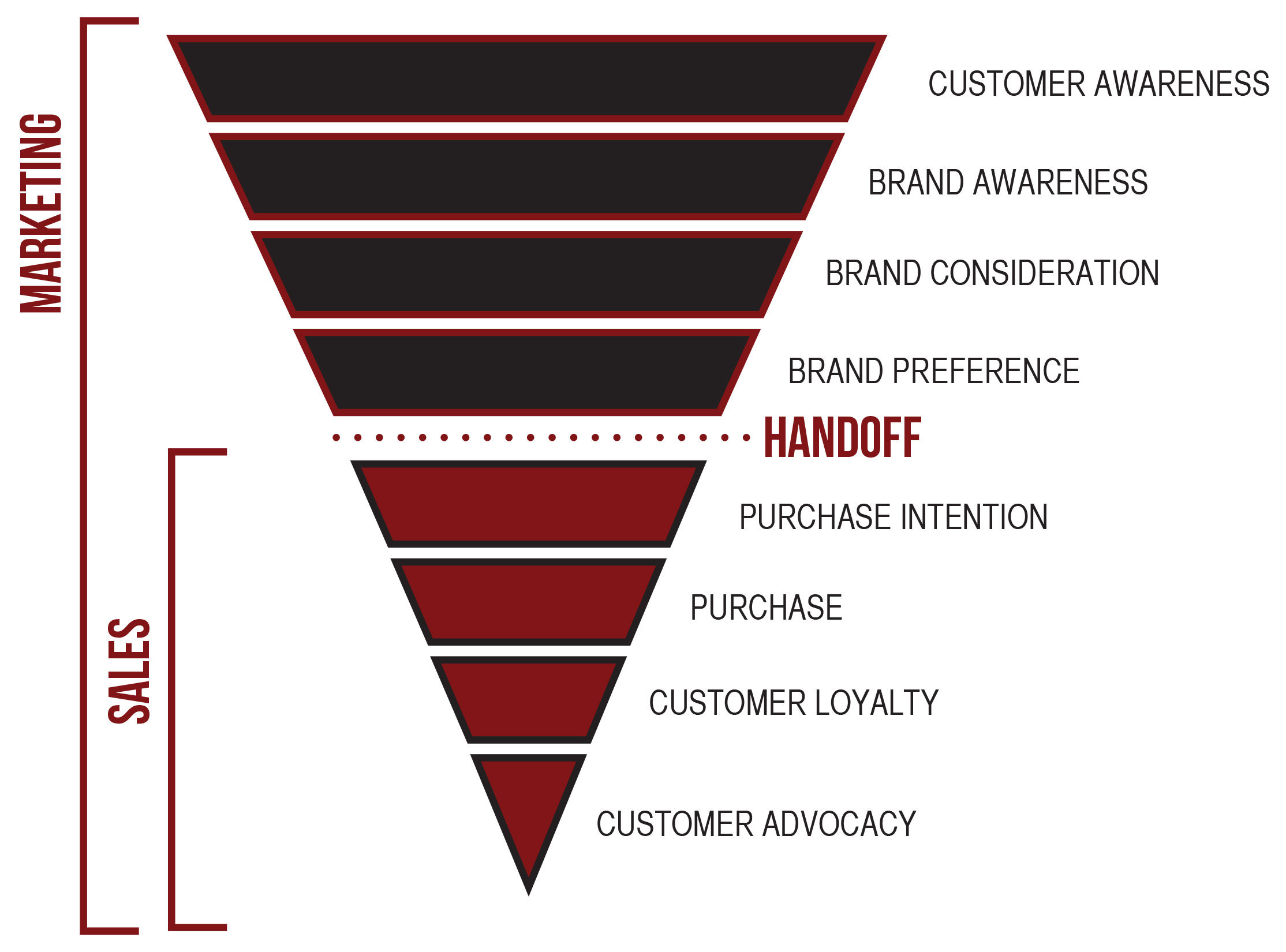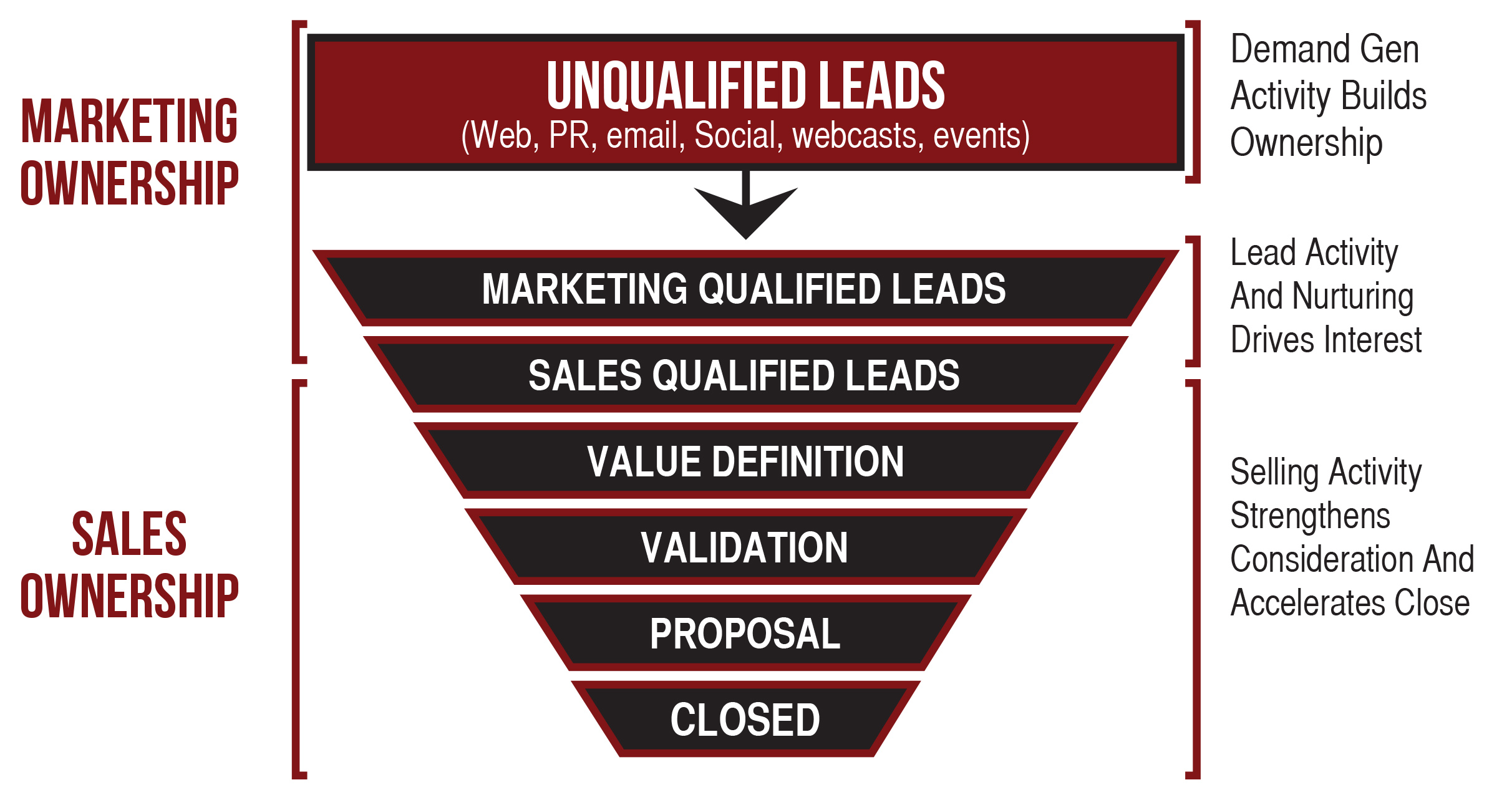
Disagreements in operational definitions are one of the biggest contributing factors to sales and marketing misalignment.
And getting these two teams on the same page is not something you want to mess up.
Organizations with tightly-aligned sales and marketing have 36% higher customer retention rates and achieve 38% higher sales win rates.
Moreover, aligned organizations have reported an average of 32% annual revenue growth while less aligned companies report an average 7% decline in revenue.
Here are a few simple things you, as a marketer, can do to tighten the grip between sales and marketing. They aren’t revolutionary, but following these three parts of definition agreement can:
- Increase your lead-to-sale conversion rates
- Improve your relationship with customers and brand sentiment
- Boost your revenue a few percentage points.
How Do You Start the Definition Conversation?
First: Agree on What Your Funnel Looks Like.
There should be one funnel, not two. Your funnel should clearly dictate where marketing has domain, where sales comes in, and where key conversions take place. Realistically, marketing plays in all parts of the funnel, giving sales collateral support until the moment a deal closes, and often into customer support after the deal has closed.
- But where do customers start their journey?
- What actions or behaviors define the top, middle, and bottom of your funnel?
Here are a few funnels that might work for your business:


Next: Define Your Sales Stages.
Each key conversion point in the buyer’s journey must be defined and agreed upon by both marketing and sales. This is fundamental to facilitating goal alignment, and fluid collaboration within the buyer’s journey.
Examples of sales stages include:
- Qualified Lead
- Sales Accepted Lead
- Marketing Qualified Lead
- Opportunity (the difference between sales and marketing generated opportunities may apply)
Finally: Define Other Key Variables.

Not all prospects will be perfect. Inevitably, sales will throw out certain leads due to qualitative criteria like a prospect’s budget, interest, or “fit.”
These things, too, need to be agreed upon by both marketing and sales:
- Marketing’s pipeline responsibility
- Sales’ pipeline responsibility
- Red flags
- The maximum time for a sales rep to follow up on a qualified lead
The tactical goal here is to agree on terms so spot-on that sales can never say, “marketing leads suck” and marketers never shake their head in disappointment when sales asks for the umpteeth time, “do we have any content on _______?”
The overarching goal is to position your sales and marketing departments in a way that supports bigger business initiatives: better communication with prospects, shortened deal cycles, more efficiency with a given number of resources, and—of course—revenue.
